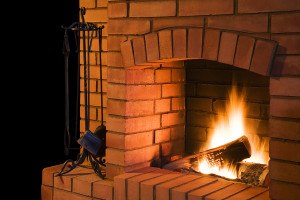Dave was making his way through his house trying to find out why his smoke detectors were sounding … then he saw it. Scorched paint and burned places covered the wall above the fireplace, and small flames were visible in several places. While waiting for firefighters to arrive, he wondered what could have gone wrong.
Although this is a fictional account, despite hiring licensed general contractors, homeowners involved in a heating equipment fire loss may learn too late that installation or maintenance should have involved a certified or trained installer.
The National Fire Protection Association (NFPA) reported that in 2010 more than 57,000 heating equipment fires occurred in the United States. Almost 500 people were killed in these fires, and direct property losses amounted to more than $1.1 billion. From 2005 to 2009, more than one-third (37 percent) of heating-related fires involved a fireplace, chimney or chimney connector. Twenty percent of these fires were the result of mechanical failure, malfunction or improper installation.
Determining the origin of these fires is not difficult; however, identifying a specific cause of the fire can be a challenging effort. The National Fire Protection Association’s “NFPA-211 Standard for chimneys, fireplaces, vents and solid-fuel burning appliances” provides more information regarding proper installation and use than most of us care to know.
Additionally, in commercial applications, local building and fire codes may require more stringent regulations be followed. Each solid-fuel burning appliance manufacturer also publishes proper installation and use information with each specific unit. And if that isn’t confusing enough, the information is different for many models. So what should one look for when investigating a loss involving a solid-fuel burning appliance?
First, involve an origin and cause investigator to document and verify the fire’s origin. Then, familiarize yourself with the specific make and model of the appliance in question, as well as who installed it. Many units are not installed or inspected by certified or trained installers familiar with the specific requirements of the unit, but are installed by general contractors. Installation requirements vary by appliance, all of which involve minimum clearances from combustible materials. Even “zero clearance” appliances have some clearance requirements that must be met. These requirements are applicable to the appliance, flue piping and the chimney.
Following are some general requirements, but there are more to consider.
Fireplace appliances must be installed inside an opening that meets the minimum requirements. The appliance must be installed flush with surrounding framing and must not be recessed into the opening. It must also allow for proper clearances between the rear of the unit and the back of the enclosure. The opening must provide for minimum distances from the door opening to side wall, and from top of the appliance to the mantel.
Fire stops should be provided within the chimney void area that also includes approved spacers at any point where the piping penetrates the fire stopping material. These voids must be free of any material, including insulation.
Flue piping size and type requirements vary by the manufacturer’s recommendations, appliance type and construction.
Chimney height requirements apply depending upon roof type and height, and local ordinances may require a spark arrester. Minimum space requirements also apply from chimney above the roof line to other portions of the dwelling. Zero clearance fireplaces may require an anchor plate be installed on top of the unit.
When required, the anchor plate must be matched to the specific unit. Intake air requirements apply to many models. In some instances, insulation may be used as a “clearance reduction system,” but then it, too, must meet minimum requirements.
NFPA-211 recommends that fireplaces and chimneys be inspected once a year. Ascertain if an inspection has been conducted and by whom. Often, aging appliances may have deterioration of the flue piping that allows hot gases to enter the void space and contact combustible materials. These problems should be identified during an inspection by a qualified technician.
The temperatures produced by these appliances can and do serve as a competent ignition source for nearby combustibles. For losses involving solid-fuel appliances, involve a qualified expert. He can ensure that the mountain of requirements are thoroughly researched so that subrogation is not lost in those instances where product failure or third-party liability is possible.
Dennis K. Haas is a senior investigator and field supervisor for UNIFIED Investigations & Sciences Inc. in San Antonio, Texas.
Was this article valuable?
Here are more articles you may enjoy.

 Munich Re: Insured Losses From Wildfires, Storms and Floods Hit Record High
Munich Re: Insured Losses From Wildfires, Storms and Floods Hit Record High  First Brands Judge Approves Examiner to Probe Fraud Allegations
First Brands Judge Approves Examiner to Probe Fraud Allegations  OpenAI And Microsoft Sued Over Murder-Suicide Blamed on ChatGPT
OpenAI And Microsoft Sued Over Murder-Suicide Blamed on ChatGPT  Billionaire NFL Owner Suing Over Billboards Near His SoFi Stadium
Billionaire NFL Owner Suing Over Billboards Near His SoFi Stadium 